Understanding Empathy in Autism Spectrum Disorder
Empathy — the ability to understand and share the feelings of another — plays a pivotal role in human social interactions. In autism spectrum disorder (ASD), empathy manifests in complex, sometimes contradictory ways. Recent research sheds light on how different components of empathy, including cognitive and affective dimensions, relate to the social behaviors and challenges faced by autistic individuals. This article delves into the nuanced relationship between autism and empathy, exploring behavioral characteristics, assessment tools, therapeutic approaches, and the lived experiences of those on the spectrum.
Defining Empathy: Cognitive Versus Affective Components
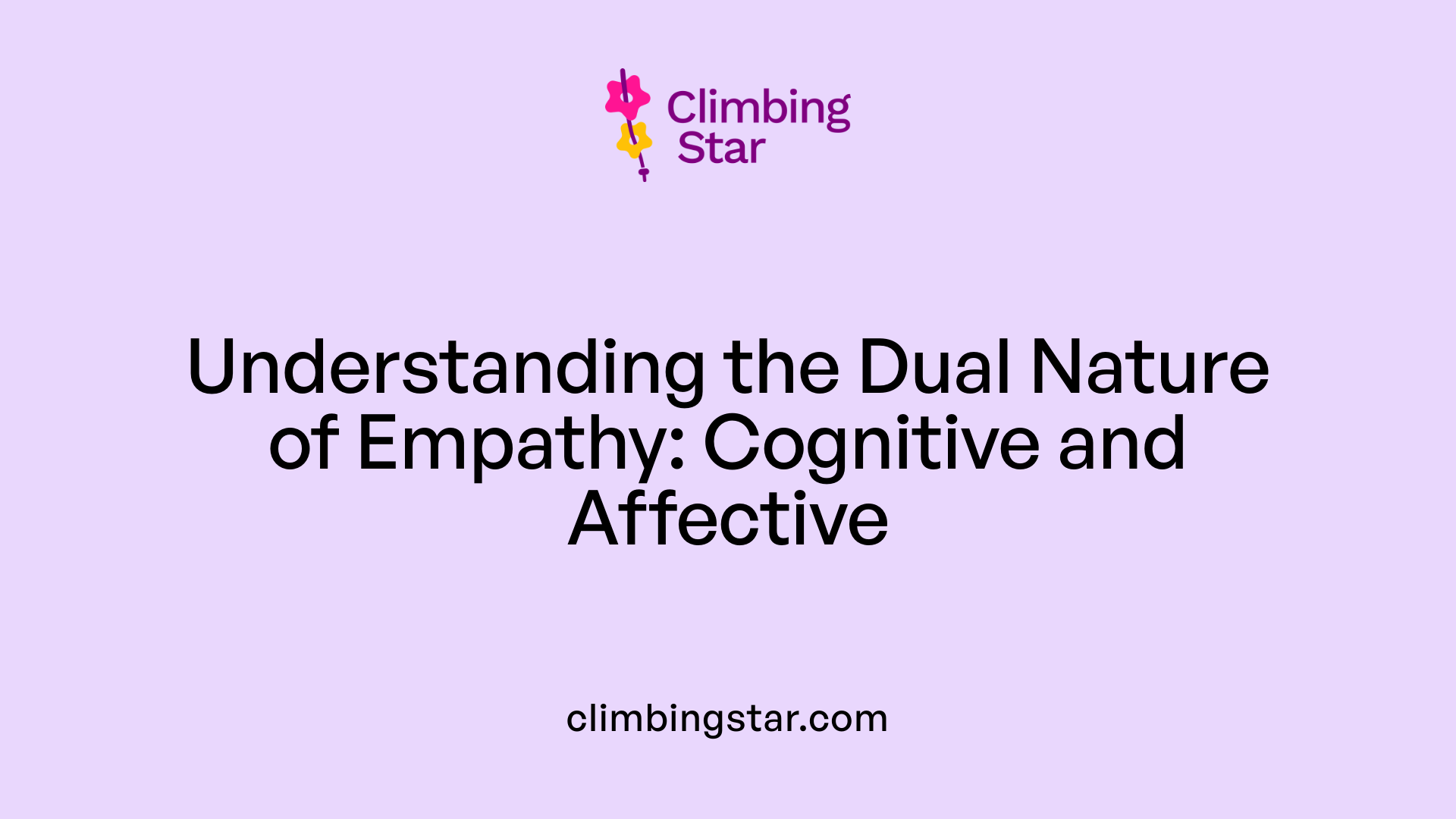
Cognitive Empathy: Understanding Others' Thoughts and Feelings
Cognitive empathy refers to the ability to explicitly understand and infer the mental states of others, including their thoughts, intentions, and feelings. This process, often described as mentalization or Theory of Mind (ToM), allows individuals to predict and interpret others' behaviors by stepping into their perspective. Tools such as false belief tasks and the Reading the Mind in the Eyes Test are commonly used to measure these cognitive empathy abilities.
Affective Empathy: Experiencing Others' Emotions
Affective empathy involves the capacity to share and experience the emotions of others. It is an emotional resonance that occurs on a more implicit and bodily level, sometimes called intercorporeality, which is foundational for emotional connections. This emotional experience enables compassionate responses and fosters interpersonal bonding.
Distinction and Significance in Social Interactions
While both cognitive and affective empathy are crucial for social competence, they serve different functions. Cognitive empathy helps individuals interpret social cues and respond appropriately by understanding others' mental states, whereas affective empathy anchors emotional responses and caring behaviors.
In autism spectrum disorder (ASD), these components show differing patterns. Individuals with ASD often have impaired cognitive empathy, affecting their ability to understand others' perspectives. However, affective empathy may be preserved or variably expressed, though disruptions in nonverbal communication and bodily resonance can impact emotional sharing. Recognizing these distinct aspects highlights the complexity of empathy and guides personalized interventions aimed at enhancing social functioning.
Empathy Profiles in Autism Spectrum Disorder: Variability and Complexity
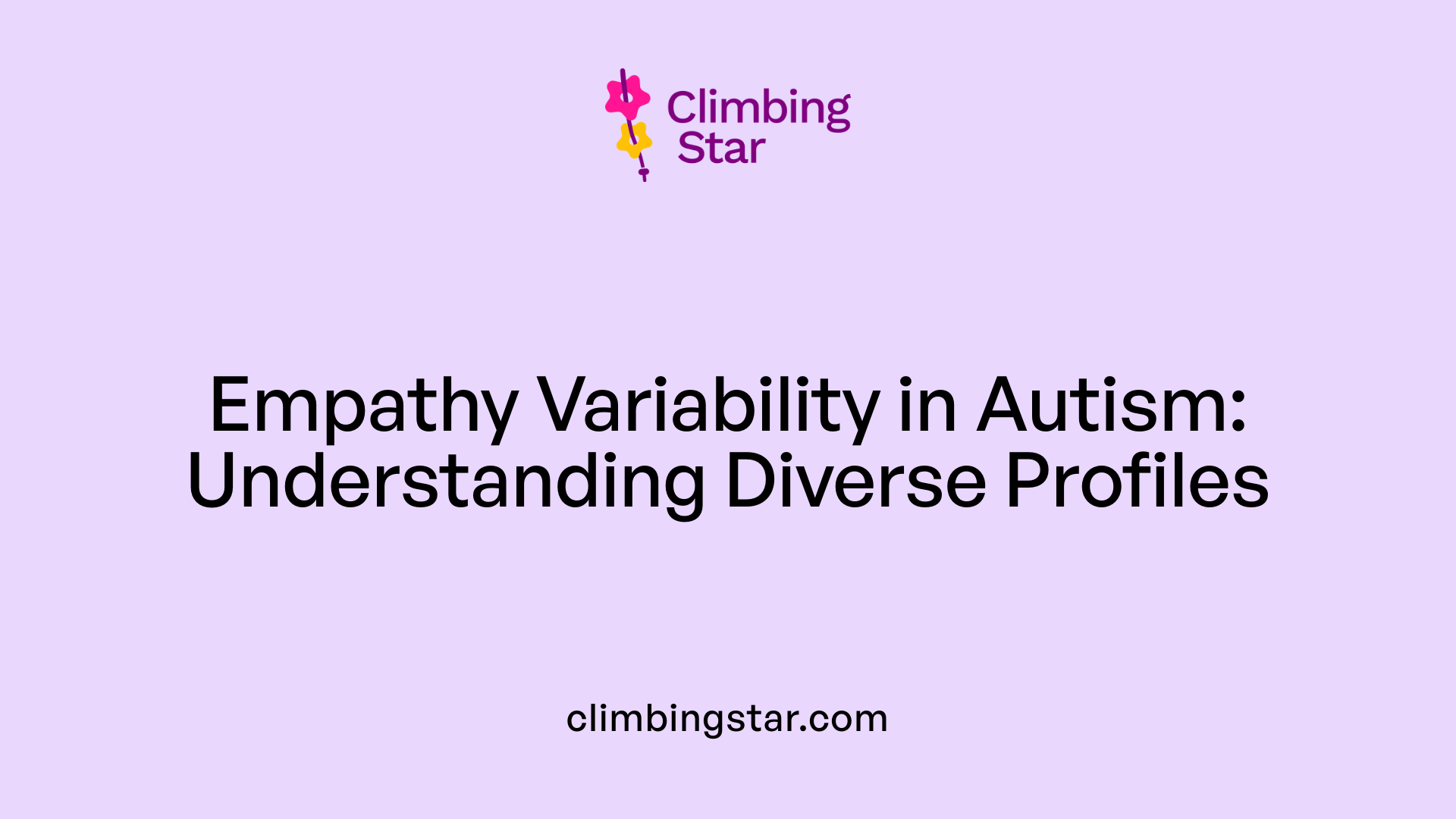
How Does Cognitive Empathy Differ in Autistic Individuals?
Research consistently shows that autistic individuals report lower levels of cognitive empathy compared to their non-autistic peers. Cognitive empathy involves the explicit understanding of others’ thoughts and feelings—a skill often assessed through tasks measuring theory of mind (ToM), such as false belief tasks and the Reading the Mind in the Eyes Test. While autistic individuals frequently display impairments on these tests, it is important to note that ToM deficits are not uniform across the spectrum, reflecting nuanced profiles.
What Is the Evidence Regarding Affective Empathy in Autism?
Affective empathy, the capacity to experience others’ emotions, presents mixed findings in autism research. Some studies show impairments in affective empathy among autistic individuals, whereas others highlight similar empathic traits compared to typically developing (TD) peers, especially regarding emotional responsiveness. This variability may stem from methodological differences and the complexity of assessing affective empathy, which itself includes responses to both positive and negative emotions.
How Variable Are Empathic Abilities Within the Autistic Population?
Autistic individuals exhibit greater heterogeneity in empathic tendencies compared to non-autistic groups, highlighting high variability within this population. This diversity encompasses differences in both cognitive and affective empathy, with some autistic people experiencing intense hyper-empathy while others show reduced emotional resonance. The Perth Empathy Scale (PES), a validated measure, supports this by revealing a broad range of empathic profiles without bias between groups. Understanding this variability is crucial for tailoring personalized interventions that acknowledge individual strengths and challenges in empathy.
Theory of Mind and Its Relation to Empathy in Autism
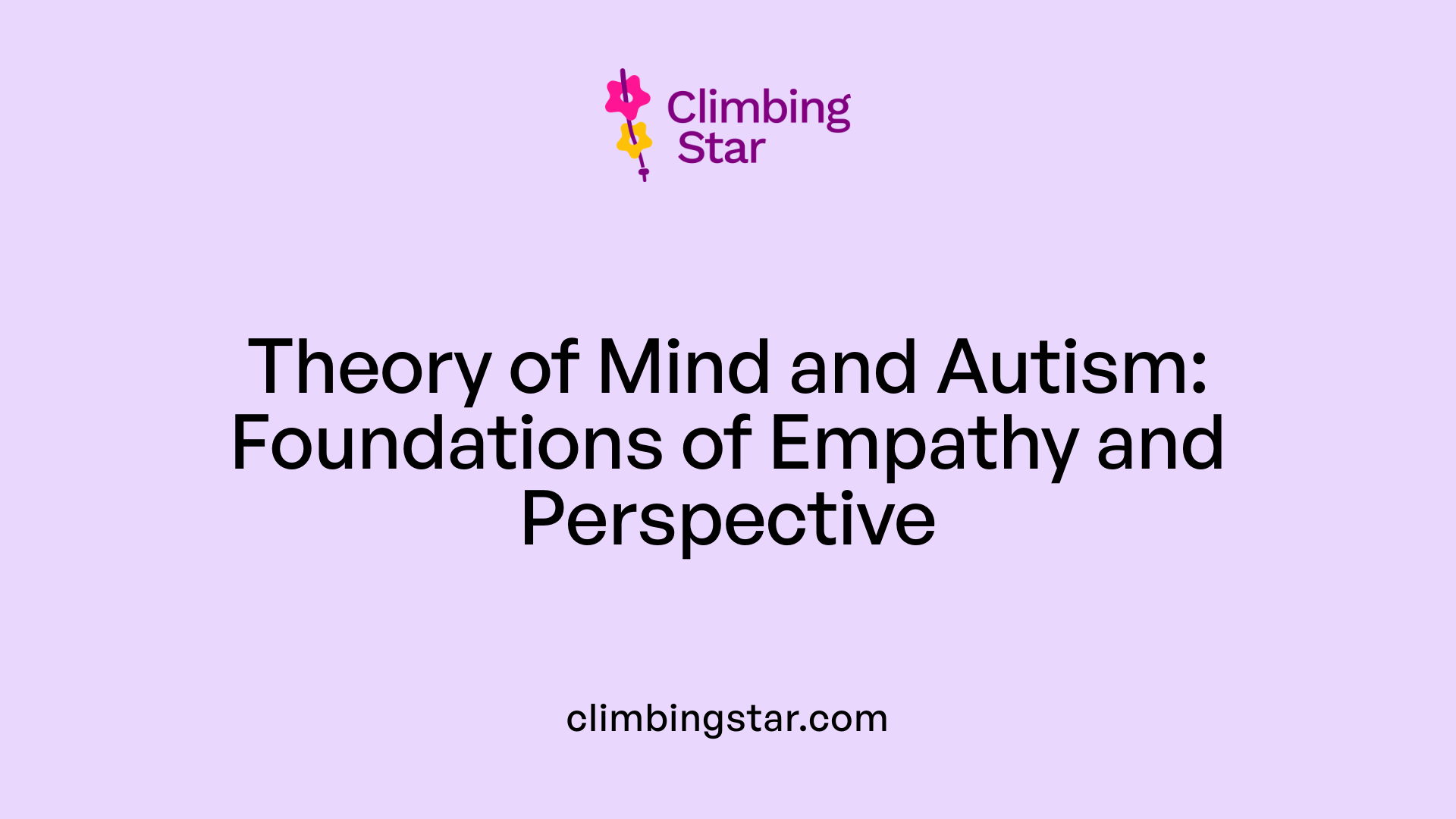
What Is Theory of Mind (ToM)?
Theory of Mind (ToM) refers to the ability to understand and infer others' mental states, such as thoughts, beliefs, and intentions. It enables individuals to predict and interpret others' behaviors by attributing mental states to them. ToM is closely related to cognitive empathy, which involves consciously understanding others' emotions and perspectives.
How Do Autistic Children Differ in ToM Abilities?
Autistic children generally exhibit impairments in Theory of Mind compared to their typically developing (TD) peers. This means they might find it more challenging to anticipate or interpret others’ thoughts and feelings. Experimental assessments, like false belief tasks and the Reading the Mind in the Eyes test, often show that autistic individuals perform worse on ToM-related measures.
Relationship Between ToM and Cognitive Empathy
ToM overlaps largely with cognitive empathy, as both involve mentalizing functions. While cognitive empathy requires understanding another's emotions explicitly, ToM provides the foundational skill by enabling one to attribute mental states to others. In autism spectrum disorder (ASD), deficits in ToM often co-occur with reduced cognitive empathy, contributing to social communication difficulties.
Variability and Developmental Considerations in ToM Impairments
Despite general trends, ToM impairments in ASD are not universal or uniform. Some autistic individuals show relatively preserved ToM skills. Also, ToM typically develops after early signs of ASD, suggesting it may not be the primary root of social challenges. The developmental trajectory of ToM indicates that early impairments in affective empathy and nonverbal communication—linked to bodily resonance or intercorporeality—could underlie core social difficulties more than ToM deficits alone.
Phenomenological Perspectives: A Disordered Affective Empathy Rooted in Impaired Intercorporeality
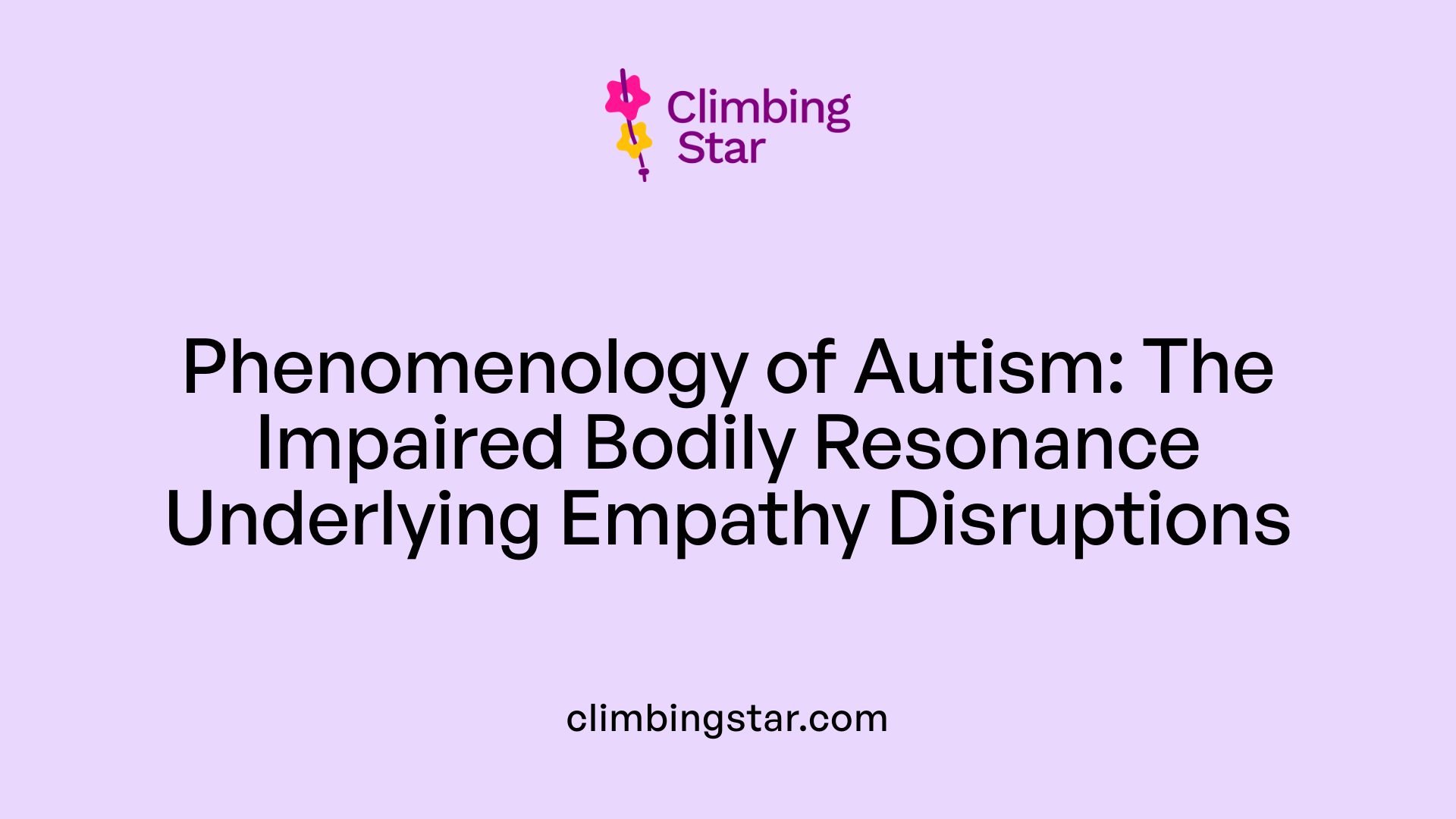
What is Intercorporeality and its role in Affective Empathy?
Intercorporeality refers to the implicit bodily resonance and mutual sensory connection that occurs naturally between individuals. This bodily resonance underpins affective empathy, the ability to feel and share others' emotions on a pre-cognitive, physical level. In typical development, early interactions such as face-to-face communication, imitation, and shared gestures foster this automatic, nonverbal form of empathy.
How is Autism Characterized as a Disorder of Affective Empathy Rather than Purely Cognitive Deficits?
Phenomenological analyses suggest that autism spectrum disorder (ASD) primarily involves difficulties in affective empathy due to disrupted intercorporeality, rather than only problems with cognitive empathy or theory of mind (ToM). While many studies highlight cognitive empathy deficits in ASD, foundational emotional resonance—the bodily attunement to others' feelings—is often impaired. This challenges views that place social difficulties in ASD solely on explicit mentalizing deficits.
What Impact Does Impaired Nonverbal Communication Have on Affective Empathy in Autism?
Core characteristics of ASD include challenges with nonverbal communication such as reduced facial expressions, atypical gaze patterns, and impaired spontaneous mimicking of others’ emotions and actions. These signs reflect a lack of intercorporeal bodily resonance, limiting the implicit sharing of emotional states. Difficulties in these nonverbal domains hinder the natural emotional connection essential for affective empathy and social engagement.
Together, these insights frame ASD as a disorder where the early, bodily-based foundations of empathy are disrupted. This provides an important dimension beyond cognitive understanding deficits, pointing toward therapeutic approaches that emphasize emotional development and relational exchange to nurture implicit empathetic abilities.
Real-World Prosocial Behaviors in Autistic Children
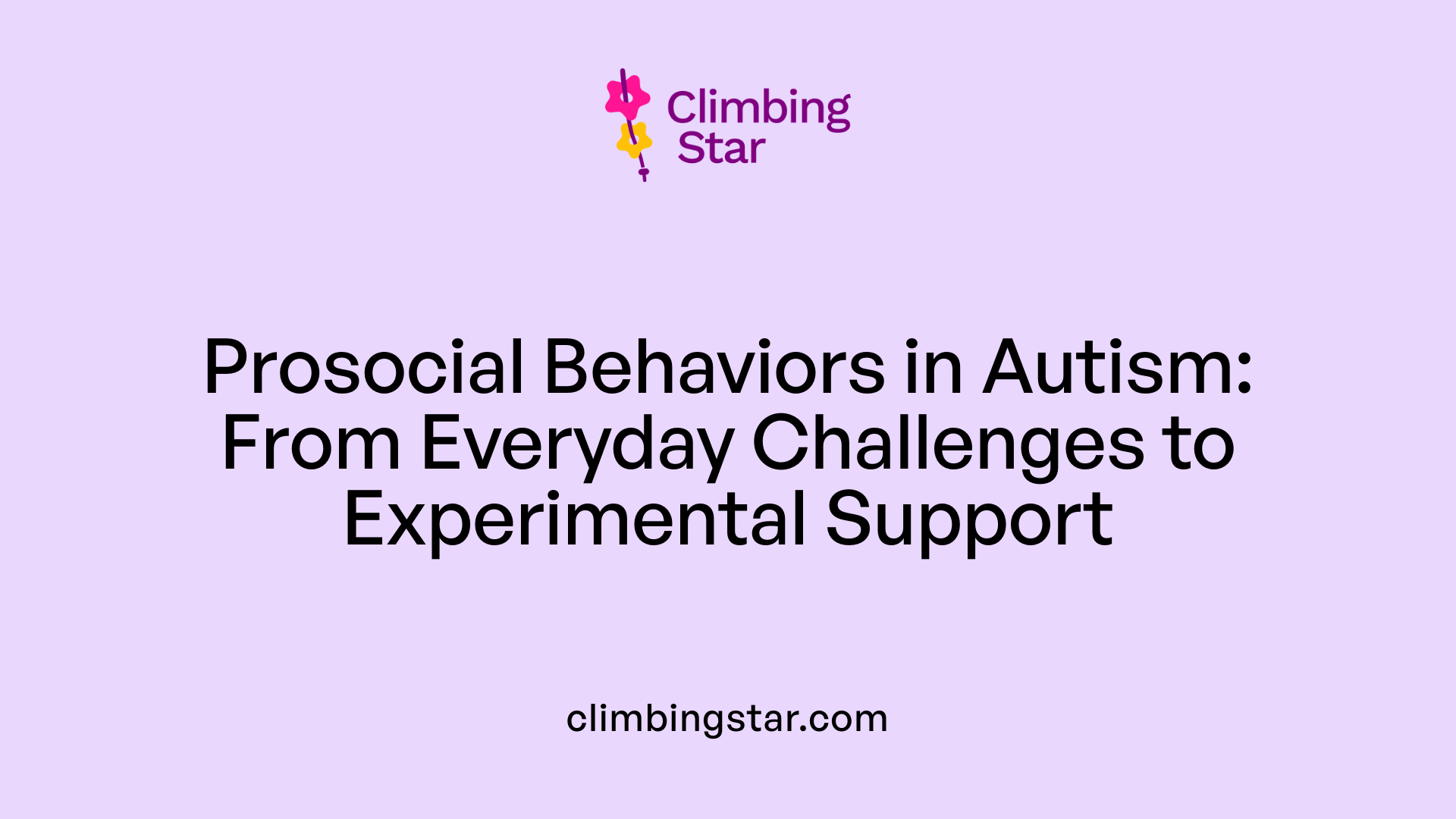
Lower rates of prosocial behavior in everyday settings compared to typically developing children
Children with autism spectrum disorder (ASD) frequently exhibit fewer prosocial behaviors in real-world environments than their typically developing (TD) peers. These everyday prosocial behaviors include sharing, helping, and cooperating, which are often reported as less common among autistic children in natural social contexts. This discrepancy highlights the social challenges present in everyday interactions for children with ASD.
Contrast with experimental task performance showing some helping behaviors and fairness preferences
Interestingly, experimental studies reveal a more nuanced picture. In structured settings, autistic children have demonstrated helping behaviors and a preference for equality during resource-sharing tasks, such as the Dictator Game. However, they also tend to accept unfair offers more readily than TD children, indicating a complex pattern of prosocial responses that may differ depending on the context and demands of the situation.
Influence of empathy and ToM on prosocial actions
The variation in prosocial behavior between real-world and experimental settings appears linked to underlying empathic traits and Theory of Mind (ToM) abilities. Autistic children typically show lower ToM skills compared to TD children, although their levels of affective empathy—feeling others' emotions—are similar. Empathic traits, especially affective empathy, positively correlate with parent-reported prosocial behaviors, while ToM ability is associated with prosocial behaviors observed during experimental tasks. These findings suggest that improvements in ToM and empathy could support increased prosocial behavior in naturalistic settings for children with ASD.
Empathy Assessment Tools: The Perth Empathy Scale (PES)
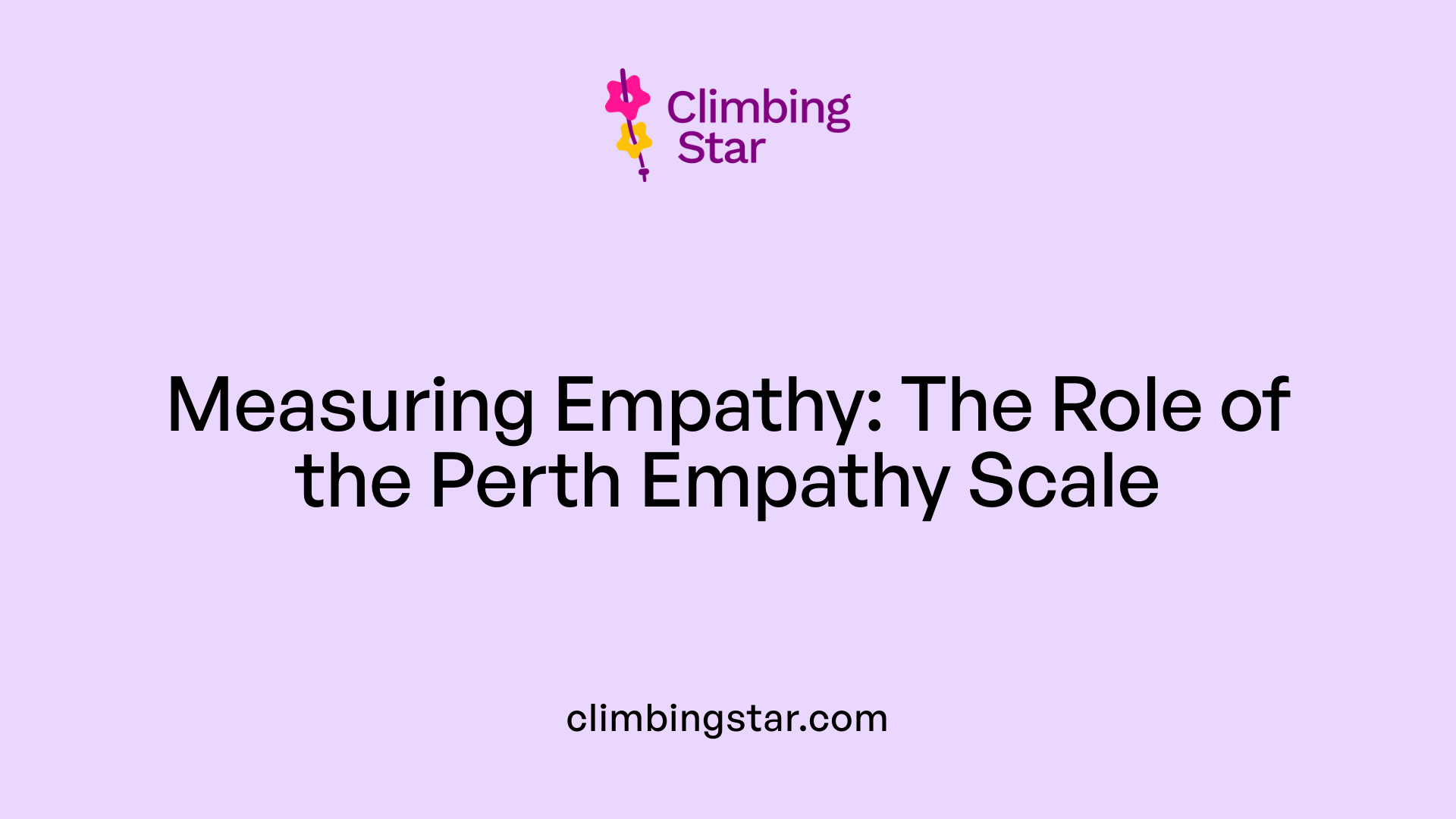
What is the structure of the PES capturing cognitive and valence-specific affective empathy?
The Perth Empathy Scale (PES) is a well-validated self-report tool designed to assess empathy comprehensively. It distinguishes between cognitive empathy—the ability to understand others' thoughts and feelings—and affective empathy, which relates to experiencing others' emotions. Importantly, the PES captures valence-specific affective empathy by separately evaluating emotional responses to positive and negative emotions. This nuanced approach allows for a detailed profile of empathic tendencies across different emotional contexts.
Does the PES show measurement invariance between autistic and non-autistic adults?
Research indicates that the PES demonstrates no meaningful measurement bias, known as measurement invariance, between autistic and non-autistic adult groups. This means the PES measures empathy in a consistent and comparable way across these populations, ensuring that observed differences in empathy scores reflect true variations rather than artifacts of the instrument.
How is the PES useful in comparative research and clinical contexts?
Because of its validated structure and invariance properties, the PES is a valuable tool for comparative research exploring empathic traits in autistic versus non-autistic individuals. It can detect differences in cognitive empathy and affective empathy for both positive and negative emotions, providing insights into the heterogeneity and specific empathic profiles within autism. Clinically, the PES aids practitioners in assessing empathy to inform individualized intervention strategies and monitor therapeutic outcomes, especially in efforts to foster social and emotional understanding.
| Feature | Description | Significance |
|---|---|---|
| Cognitive Empathy | Understanding others' thoughts and feelings | Core to perspective-taking |
| Valence-Specific Affective Empathy | Emotional responsiveness to positive vs. negative emotions | Captures subtle emotional processing differences |
| Measurement Invariance | No bias across autistic/non-autistic adults | Ensures fair cross-group comparisons |
| Research Applications | Comparative studies of empathy profiles | Supports identification of empathy variations |
| Clinical Use | Guides assessment and therapeutic planning | Enhances personalized social-emotional interventions |
Age and Gender Effects on Empathy in Autism
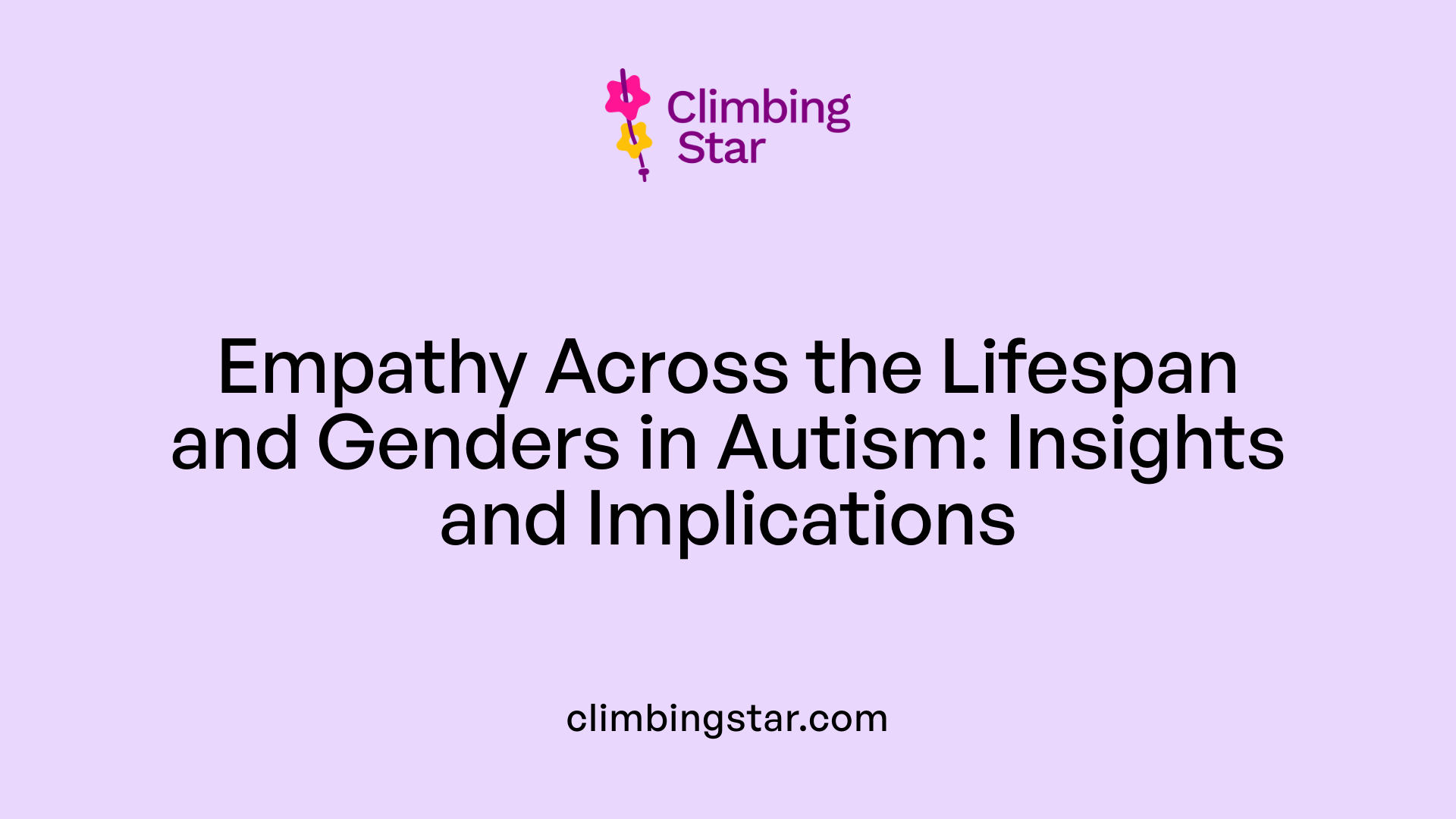
How Does Age Influence Empathy Differences in Autistic Individuals?
Research indicates that age plays a significant role in moderating empathy differences between autistic and non-autistic people. Specifically, cognitive empathy and negative affective empathy show larger disparities as individuals grow older. This means that older autistic adults tend to experience more pronounced challenges in understanding others' mental and emotional states and managing negative emotions empathetically compared to their non-autistic peers.
This finding has important implications for supporting autistic individuals across the lifespan. It suggests that empathy-related difficulties may not remain static but could intensify with age, highlighting the need for ongoing support and tailored interventions sensitive to developmental stages.
Does Gender Affect Empathy Differences in Autism?
Contrary to some expectations, studies have found that gender does not significantly moderate empathic differences between autistic and non-autistic groups. Both males and females on the autism spectrum show comparable patterns of cognitive and affective empathy relative to non-autistic individuals.
This lack of gender effect suggests that interventions aiming to enhance empathy in autism do not necessarily need to be gender-specific but rather focus on individual needs and variability within the autistic population.
What Are the Implications for Intervention and Support?
Given the increasing empathy differences with age and the lack of gender influence, it is vital to design autism interventions that consider lifespan development while being inclusive of all genders. For example, social skills training programs may need to adapt their approaches for older autistic adults to address enhanced challenges with cognitive perspective-taking and emotional regulation.
Professionals and caregivers should be aware that empathic abilities in autism are dynamic rather than fixed. This perspective encourages continuous monitoring and tailored support long beyond childhood, helping autistic individuals maintain social competence and emotional well-being throughout their lives.
The Phenomenon of Hyper-Empathy in Autism: Challenges and Management

What is Hyper-Empathy and How Does It Present in Autism?
Hyper-empathy refers to an intense and heightened sensitivity to the emotions of others. In individuals with autism spectrum disorder (ASD), hyper-empathy can be especially powerful, affecting how they perceive and respond to social and emotional cues. This heightened emotional responsiveness can deepen emotional experiences but also lead to overwhelming sensations in social settings.
How is Hyper-Empathy Connected to Trauma and Emotional Intensity?
Early trauma is often intertwined with hyper-empathy in autistic individuals, potentially amplifying their emotional sensitivity. Experiences of trauma can intensify the emotional responsiveness that characterizes hyper-empathy, making emotional regulation and social interaction more challenging. This linkage suggests that addressing trauma is crucial when managing hyper-empathy in autism.
What Challenges Does Hyper-Empathy Create?
Autistic individuals with hyper-empathy often experience difficulties in several areas:
- Communication: Intense emotional sensitivity can complicate interpreting or expressing emotions clearly.
- Emotional Regulation: Managing heightened emotional responses is frequently a struggle, leading to emotional overwhelm.
- Social Relationships: The combination of emotional intensity and communication challenges may result in social withdrawal or complicated relationships, impacting overall social functioning.
What Strategies Help Manage Hyper-Empathy?
Effective approaches to managing hyper-empathy in autism focus on creating supportive environments and therapeutic interventions:
- Setting Boundaries: Teaching individuals how to establish personal limits helps prevent emotional exhaustion.
- Trauma-Informed Therapy: Addressing past traumas through specialized therapy can reduce emotional sensitivity and improve coping strategies.
- Support Networks: Close involvement from family, caregivers, and professionals provides critical emotional validation and assistance.
- Collaboration with Therapists: Techniques like cognitive-behavioral therapy and mindfulness practices help develop emotional regulation skills.
Together, these strategies foster resilience and help individuals with autism navigate the emotional complexities of hyper-empathy more effectively.
Parental and Caregiver Roles in Supporting Empathic Development
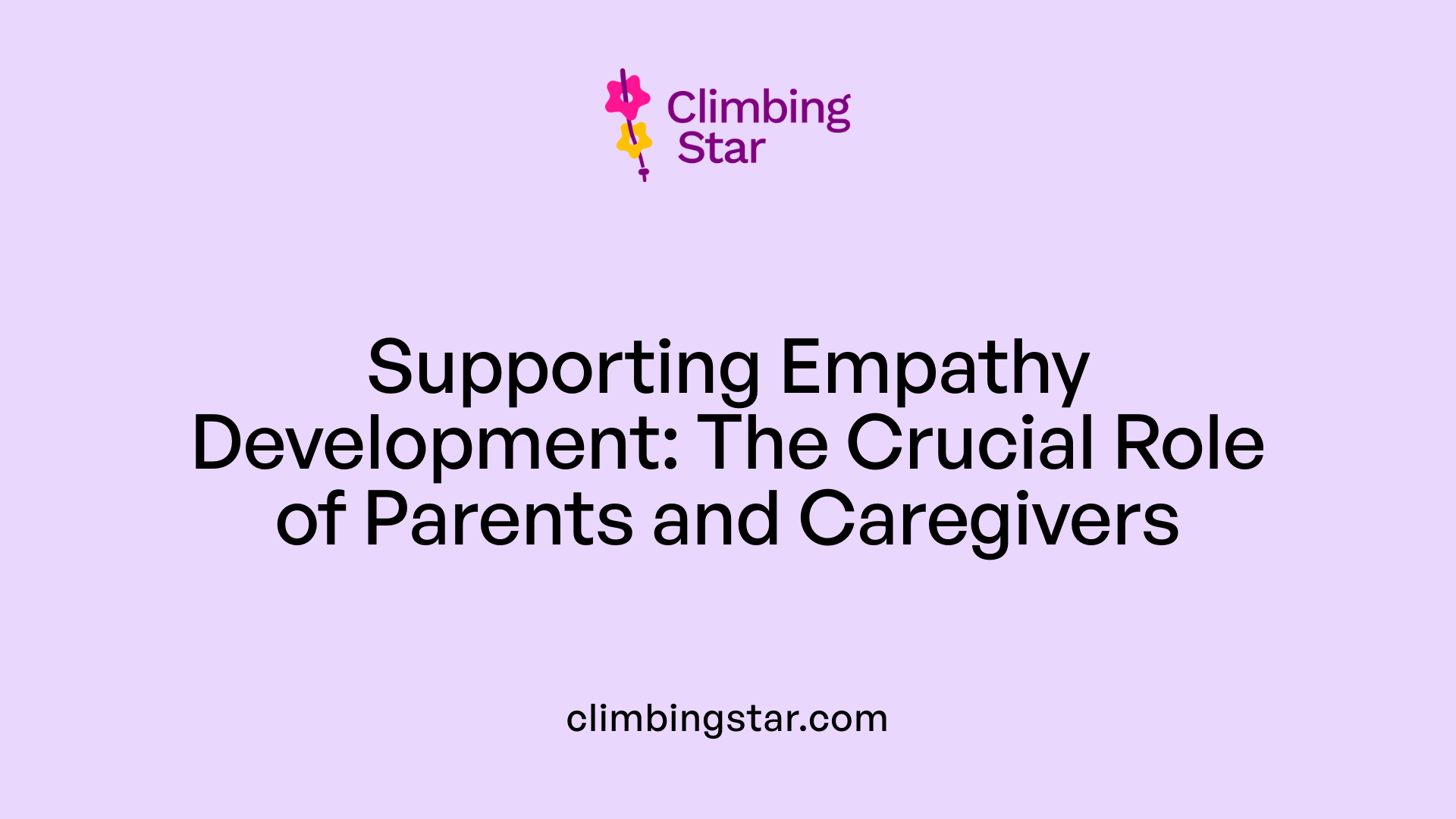
Validation of Emotions and Nurturing Emotional Growth
Parents and caregivers play a crucial role in fostering empathic development in children with autism spectrum disorder (ASD). Validating a child's emotions helps them feel understood and supports emotional regulation. Consistent emotional validation nurtures emotional growth by encouraging children to recognize and accept their feelings, which is foundational for developing affective empathy.
Supporting Relationship-Building and Social Competence
Beyond emotional validation, caregivers aid in cultivating social competence by supporting relationship-building efforts. This includes guiding children in interpreting social cues such as body language, facial expressions, and tone of voice. Using structured approaches like social stories and scripts can prepare children for social interactions, enhancing their ability to communicate and connect with peers in natural settings.
Collaboration with Professionals for Holistic Management
Effective empathic development involves collaboration with professionals including therapists, occupational therapists, and behavior analysts. Strategies such as cognitive-behavioral therapy and mindfulness techniques are often incorporated to manage challenges related to hyper-empathy, emotional intensity, and social overwhelm. This multidisciplinary approach ensures personalized care and promotes emotional resilience and social functioning in autistic children.
Applied Behavior Analysis (ABA) Therapy: A Scientific Approach to Autism Support
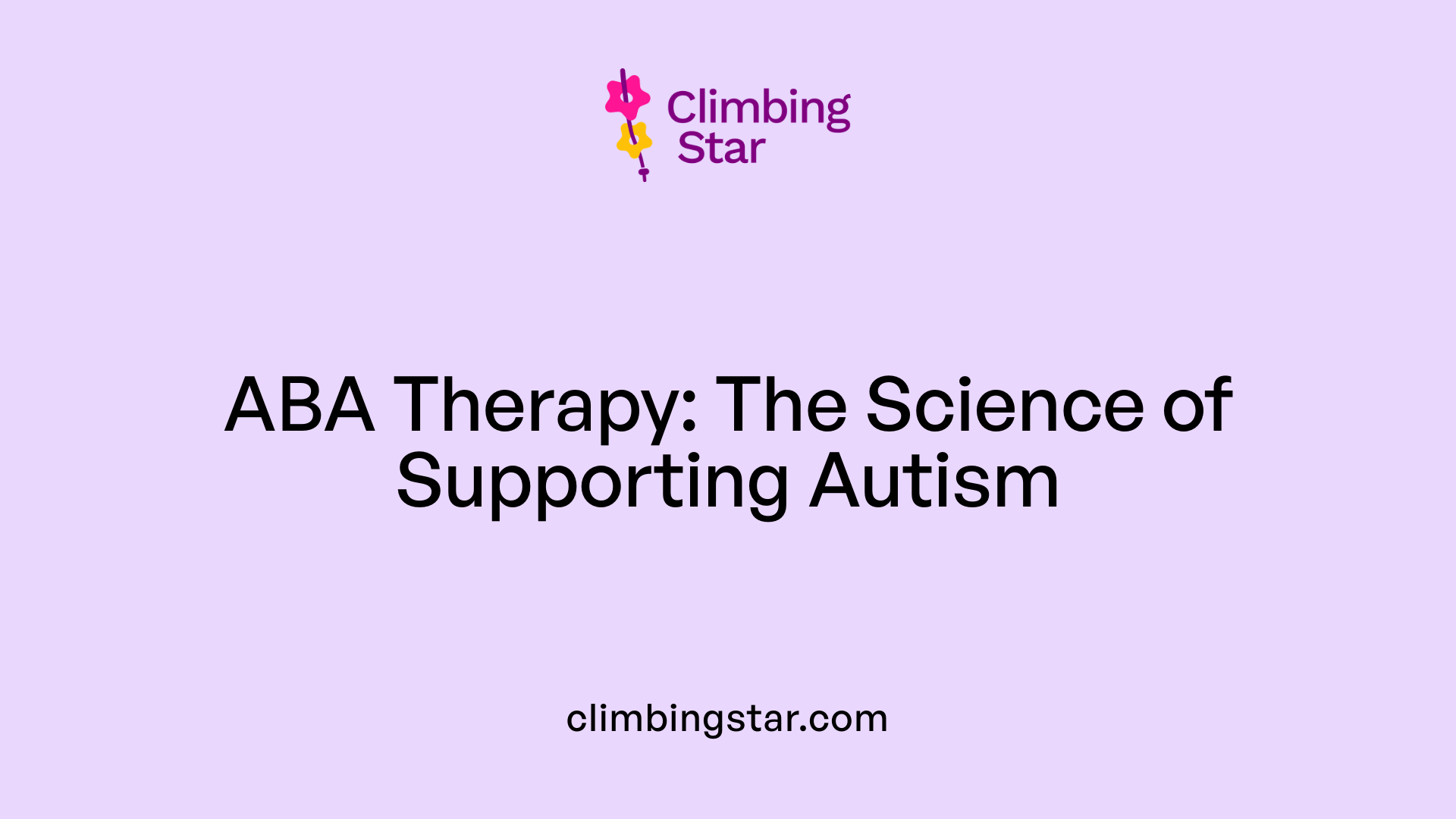
What is applied behavior analysis (ABA) therapy, and how is it used to support individuals with autism?
Applied Behavior Analysis (ABA) therapy is a science-driven strategy specifically designed to support individuals with autism spectrum disorder (ASD). It uses principles grounded in learning and behavior to encourage the development of essential skills and reduce behaviors that may be harmful or impede learning.
ABA therapy involves a thorough assessment of an individual's unique needs and abilities. Based on this evaluation, specialized professionals such as Board Certified Behavior Analysts (BCBAs) create individualized goals tailored to strengthen communication, social skills, self-care, academic performance, and adaptive behaviors. Reinforcement strategies—both positive and negative—are used to motivate and promote skill acquisition.
What are the core components of ABA therapy?
ABA uses diverse teaching methods depending on the person's age, abilities, and intervention goals. Some common approaches include:
- Discrete Trial Training (DTT): Breaking skills into small, manageable steps and teaching them systematically.
- Naturalistic Teaching: Learning happens in everyday settings with natural consequences, encouraging generalization of skills.
- Behavioral Skills Training (BST): This includes describing the skill, demonstrating it, offering visual aids, guided practice, feedback, and opportunities to apply the skill in real-life scenarios.
How does ABA therapy address social communication and behavior?
ABA specifically targets social communication growth through structured skill-building exercises like conversation techniques, understanding nonverbal cues, and interpreting body language or tone of voice. Techniques such as video modeling and social stories are integrated to provide concrete examples of social scenarios, benefiting individuals who thrive on predictable and clear guidance.
Additionally, ABA teaches self-care skills critical for daily independence and addresses challenging behaviors by identifying triggers and reinforcing alternative, more adaptive behaviors.
Why is ABA therapy effective?
Research demonstrates that ABA is one of the most evidence-based interventions for supporting individuals with ASD. Its effectiveness increases with early initiation, intensity, and consistency of therapy. The therapy's flexibility means it can be adapted to meet varying developmental levels and individual differences, incorporating parental involvement to reinforce learning across environments.
By systematically enhancing life skills and social competence, ABA therapy fosters improved emotional resilience and quality of life for individuals with autism.
| Aspect | Description | Example/Detail |
|---|---|---|
| Individualized Goal Setting | Tailoring learning targets based on assessment | Focusing on a child's unique communication needs |
| Reinforcement Strategies | Using rewards or consequences to increase desired behaviors | Praise, token systems, or natural rewards |
| Communication Focus | Teaching verbal and nonverbal social skills | Video modeling, social stories |
| Behavior Reduction | Reducing harmful or challenging behaviors | Functional behavior assessment and intervention |
| Skill Generalization | Practicing skills across settings and contexts | Role-play, peer interaction, natural environment |
| Professional Involvement | Delivered by trained specialists and includes family training | BCBAs, RBTs, parent coaching |
Qualifications and Training of ABA Professionals

Who Typically Provides ABA Therapy, and What Qualifications Do These Professionals Have?
Applied Behavior Analysis (ABA) therapy is delivered by a range of trained professionals including Board Certified Behavior Analysts (BCBAs), Registered Behavior Technicians (RBTs), and other specialized therapists. These individuals possess specific education and certification centered around behavioral analysis principles.
Education and Certification Processes
Most ABA providers have at least a bachelor's degree in relevant fields such as psychology, education, or a related discipline. Many pursue advanced degrees, often a master's in applied behavior analysis. Certification requires completing approved coursework, accruing supervised fieldwork hours, and successfully passing certification exams overseen by the Behavior Analyst Certification Board (BACB).
Licensing and BACB Requirements
To practice professionally, ABA therapists must also obtain licensure according to their state's regulations. The BACB certification is widely recognized, ensuring that practitioners meet rigorous standards for expertise and ethical practice. This credential confirms skills necessary to assess and analyze behavior, develop individualized intervention plans, and implement evidence-based strategies such as positive reinforcement.
Settings Where ABA Is Provided
ABA professionals work in diverse environments, including hospitals, schools, community centers, and specialized clinics. Their work largely supports individuals with autism spectrum disorder and other developmental or behavioral challenges, focusing on improving social skills, communication, and learning outcomes through structured behavior techniques.
These qualifications and training ensure ABA professionals have the competence and tools to offer effective, personalized care that fosters meaningful progress for those they serve.
Techniques and Strategies Commonly Used in ABA Therapy

What are some common techniques or strategies used in ABA therapy?
Applied Behavior Analysis (ABA) therapy employs a variety of methods tailored to support individuals with autism spectrum disorder. These techniques are designed to promote skill development and encourage positive behaviors while reducing challenging actions.
One foundational strategy is positive reinforcement, which involves rewarding desired behaviors to increase their occurrence. This is often combined with prompting and fading, where guidance is gradually reduced as the individual gains independence.
Another approach is behavior chaining, which breaks tasks into smaller steps, teaching each sequentially to build complex behaviors effectively. Discrete Trial Training (DTT) is a structured teaching method that presents clear, repetitive trials with distinct instructions, responses, and consequences.
In addition to highly structured methods, naturalistic teaching approaches encourage learning in everyday settings, promoting generalization of skills. Natural environments and peer interactions are crucial for applying social and communication skills in real life.
Visual supports play an important role in ABA therapy. Techniques such as video modeling and social stories provide clear, concrete examples of social interactions. These tools help individuals understand and practice desired behaviors through visual and repetitive learning cues.
Behavior management strategies include redirection, behavior contracts, and extinction procedures to decrease problematic behaviors. These are guided by the ABC framework—understanding the Antecedent, Behavior, and Consequence to tailor interventions precisely.
To enhance social competence, therapists use modeling and script fading. These techniques help individuals learn and gradually internalize conversation skills, understanding social cues such as body language, facial expressions, and tone of voice.
Collectively, ABA therapy integrates these evidence-based, individualized strategies to foster emotional resilience, social functioning, and meaningful behavior change in individuals with autism.
Benefits of ABA Therapy for Individuals with Autism
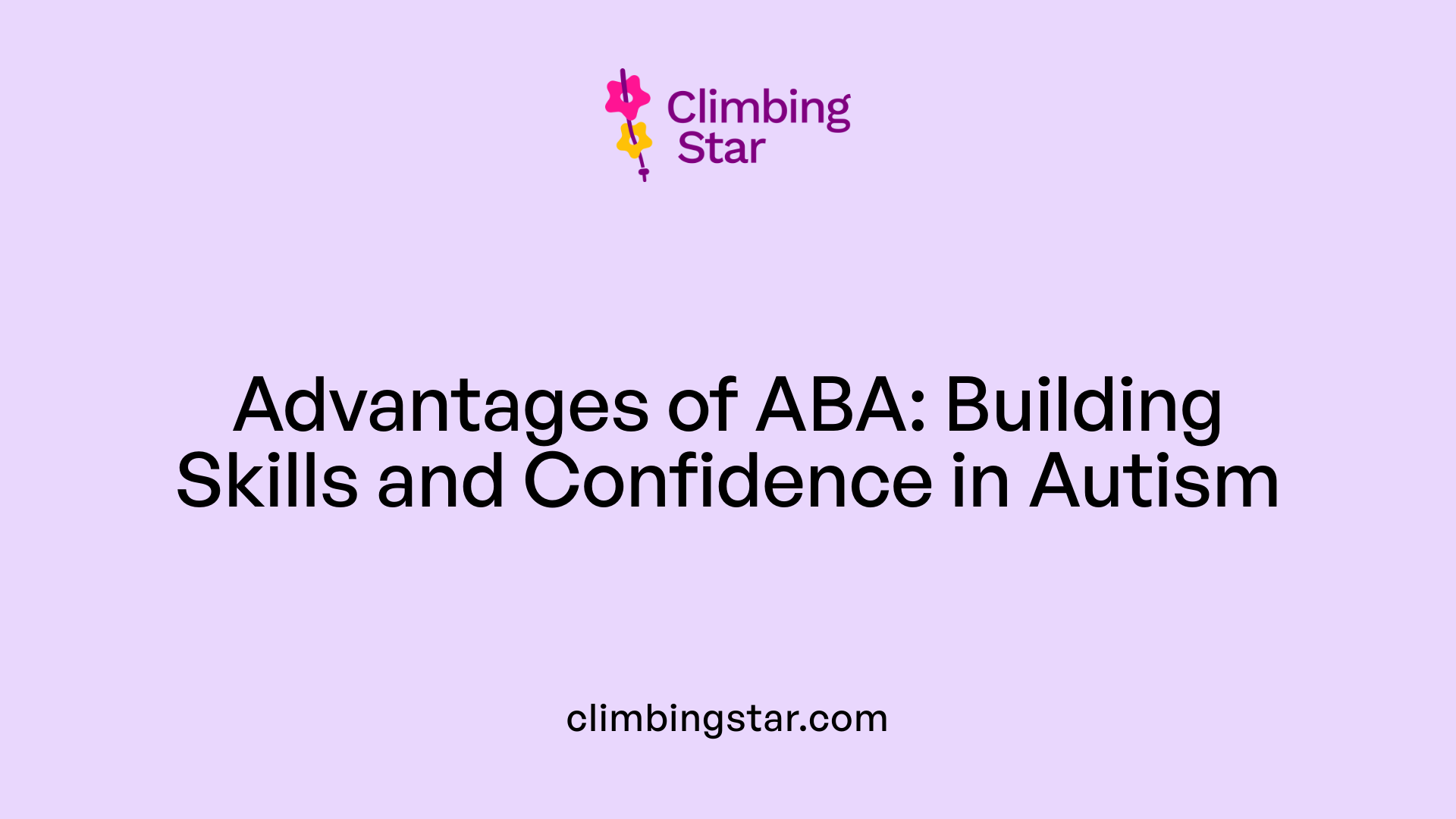
How does ABA therapy benefit children and adults with autism in their daily lives?
ABA therapy is a well-established intervention that helps individuals with autism spectrum disorder (ASD) develop critical skills enhancing their everyday functioning. By focusing on communication, daily living activities, and social skills, ABA therapy fosters greater independence for both children and adults.
At its core, ABA uses positive reinforcement and structured behavioral techniques to increase helpful behaviors while reducing those that interfere with learning and social integration. Specific methods like Discrete Trial Training and Pivotal Response Treatment target language development, attention, and problem-solving abilities. Incorporating naturalistic strategies encourages skill generalization in real-world environments.
Importantly, ABA is personalized to meet the unique needs of each individual, supporting their growth across various settings such as home, school, and community. This personalized approach builds foundational skills that enable autistic individuals to communicate effectively, manage daily tasks, and engage in social interactions with peers and family.
ABA therapy also prepares individuals for community participation by teaching functional skills and promoting adaptability to everyday challenges. These enhancements contribute to improved quality of life by enabling greater autonomy, social inclusion, and confidence in navigating real-world situations.
The comprehensive nature of ABA ensures progress is sustainable, boosting lifelong adaptive functioning and supporting meaningful engagement in family and societal activities. Through these benefits, ABA therapy serves as a cornerstone in the support of autistic individuals’ development and well-being.
Controversies and Criticisms Surrounding ABA Therapy

Are there any criticisms or controversies related to ABA therapy?
Applied Behavior Analysis (ABA) therapy has been a widely used intervention for individuals with autism spectrum disorder (ASD), but it is not without controversy. Historically, ABA involved aversive and punitive techniques aimed at reducing undesirable behaviors. Although these methods have been largely phased out, their legacy contributes to ongoing concerns about the therapy.
Critics raise several issues. One major concern is the therapy's emphasis on compliance and behavior modification. If not carefully implemented, this can lead to emotional distress, trauma, or feelings of shame among autistic individuals. Such effects are especially troubling when natural behaviors, like stimming (self-stimulatory behaviors), which help regulate stress, are discouraged or suppressed.
There is also a debate within the autism community about ABA’s impact on individual identity and natural autistic traits. Some feel that the therapy's goal to reduce certain behaviors could unintentionally suppress characteristics considered fundamental to neurodiversity. This has led to calls for more personalized treatment approaches that respect each person's preferences, focusing on embracing differences while aiding skill development.
Despite these critiques, many professionals emphasize that modern ABA, practiced ethically with a strong focus on positive reinforcement, is effective and beneficial. Programs led by trained behavior analysts strive to balance improving social and communication skills with honoring individuality. The involvement of caregivers and the use of naturalistic environments for skill generalization further support respectful and meaningful outcomes.
In summary, while ABA therapy has faced legitimate criticisms—particularly about its past practices and the risk of emotional harm—there is consensus on the importance of continuing to improve, adapt, and personalize interventions. Respect for neurodiversity and the emotional wellbeing of autistic individuals are now central to evolving ABA practices.
Social Skills Training within ABA: Behavioral Skills Training (BST)
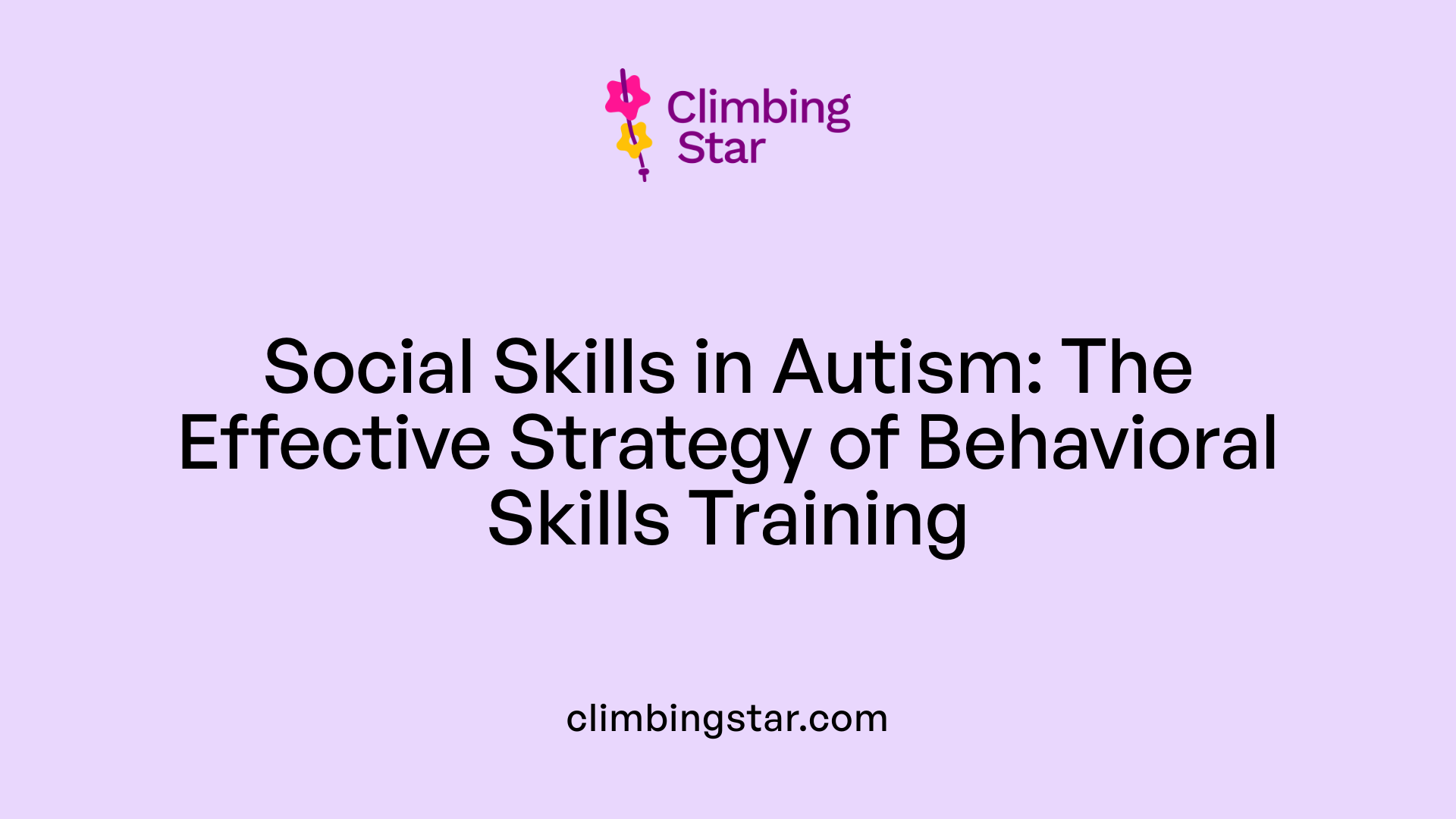
What is Behavioral Skills Training (BST)?
Behavioral Skills Training is a structured approach used in social skills training for individuals with autism, implemented within Applied Behavior Analysis (ABA). BST combines several techniques—description, modeling, practice, feedback, and opportunities for generalization—to teach new skills effectively.
How Does BST Improve Conversation Skills and Social Cue Understanding?
BST begins by clearly describing the targeted social skills, such as initiating a conversation or interpreting body language. Next, the skill is modeled by an instructor or peer, providing a visual example. Through guided practice, the learner actively rehearses these skills, receiving immediate feedback on performance. This repeated practice helps build proficiency in managing social interactions, including understanding tone, facial expressions, and conversational flow.
Why are Peer Interactions and Naturalistic Environments Important?
To ensure skills learned through BST are practical, training incorporates peer interactions and takes place in naturalistic environments, like playgrounds or classrooms. These real-world settings provide authentic social contexts, allowing learners to generalize and maintain their new skills beyond structured sessions. Engaging with peers in everyday situations helps reinforce social competence and improves the ability to navigate varied social scenarios.
Overall, BST within ABA is a comprehensive and evidence-backed method for enhancing social communication in autistic individuals. Its focus on active learning, feedback, and real-life practice helps bridge the gap between skill acquisition and everyday social functioning.
Visual Strategies to Enhance Social Communication in Autism
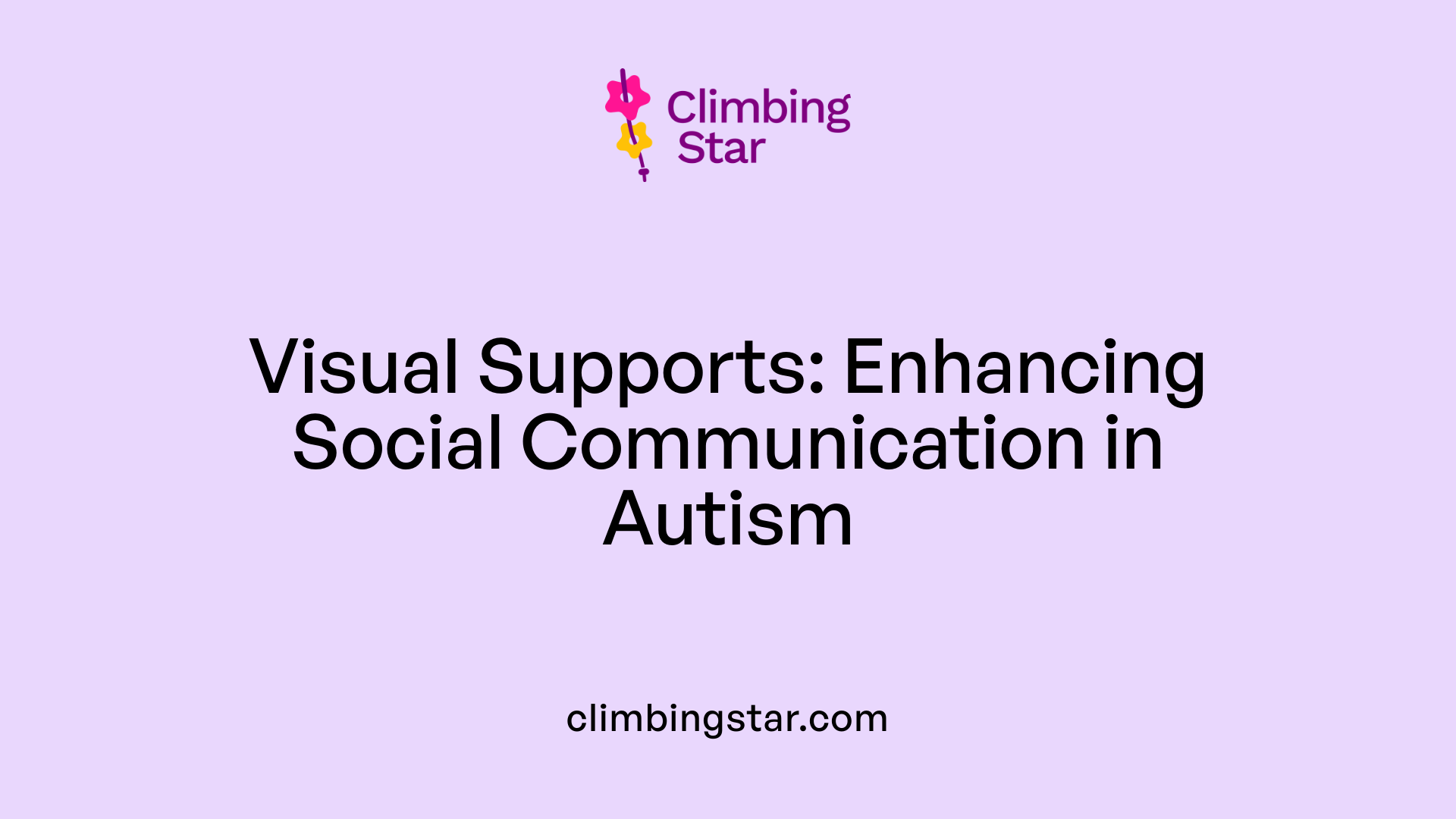
The Role of Video Modeling and Social Stories
Visual strategies like video modeling and social stories have proven highly effective for teaching social interactions to individuals with autism. These methods leverage clear, concrete visuals to demonstrate appropriate social behaviors and responses, making abstract social concepts more accessible.
Adapting to Structured, Concrete Learning Styles
Autistic learners often benefit from approaches that are structured and concrete. Social stories and scripts provide these qualities by offering step-by-step narratives that clarify social expectations. This structure helps reduce ambiguity and anxiety around social situations.
Preparation and Scaffolding for Social Interactions
Using social stories as preparatory tools equips individuals with autism to better anticipate and navigate social encounters. These visual supports scaffold social understanding by breaking down complex social cues like body language, tone of voice, and facial expressions into manageable segments. This method supports skill acquisition and promotes confidence in real-world social communication.
Overall, visual strategies serve as a bridge from learning environments to naturalistic settings by providing consistent, easily interpretable social information. These techniques underpin many autism social skills training programs, complementing behavioral practices and facilitating generalization of skills across settings.
Teaching Social Competence: Decoding Nonverbal Cues in Autism
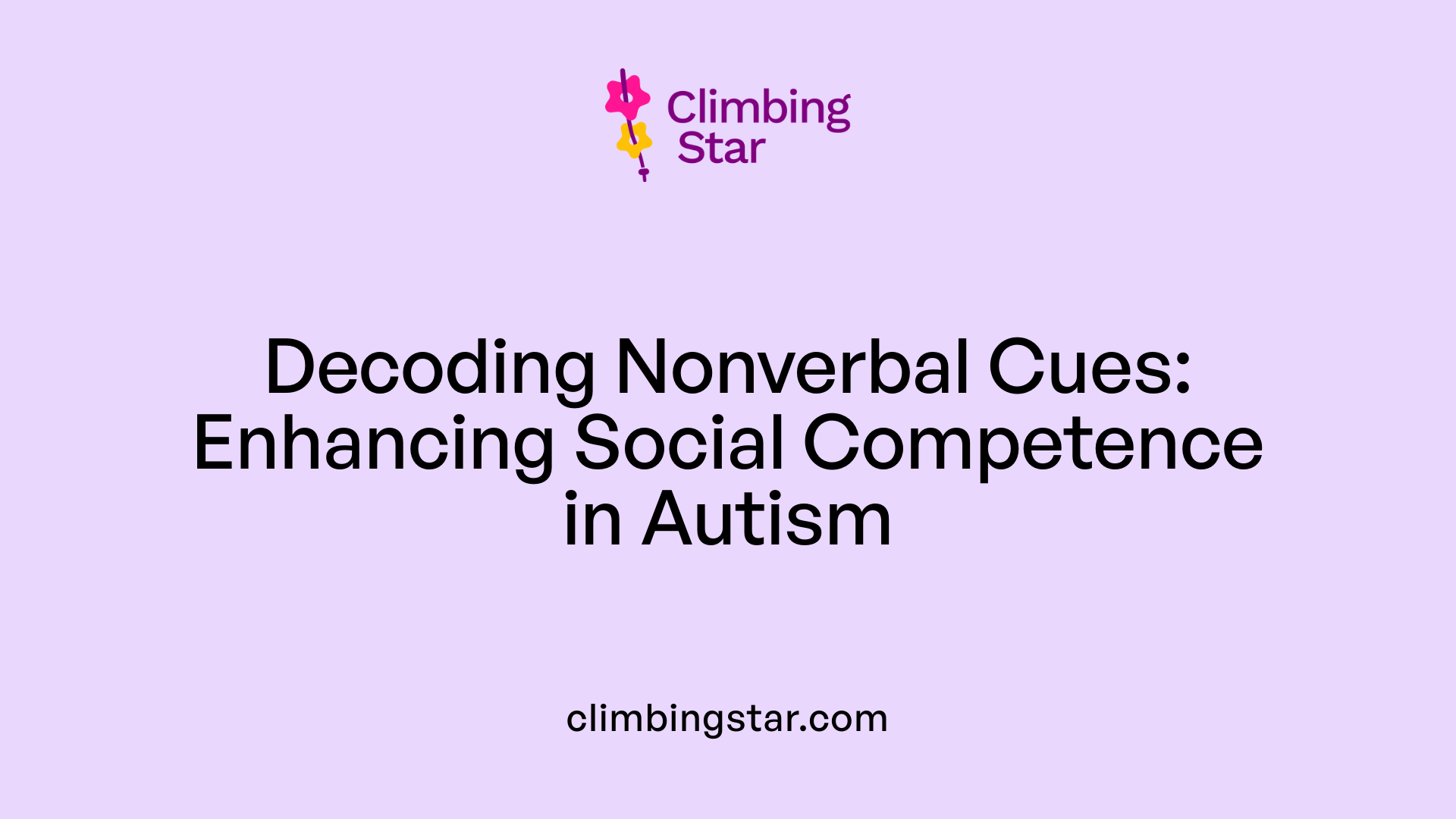
Why Are Nonverbal Cues Important for Social Competence?
Nonverbal communication—such as body language, facial expressions, and tone of voice—is essential for everyday interactions. For individuals with autism spectrum disorder (ASD), interpreting these social signals can be particularly challenging, which often contributes to difficulties in social integration and forming relationships.
How Is Training Designed to Improve Understanding of Nonverbal and Contextual Cues?
Training programs for autism frequently emphasize helping individuals decode these complex social signals to enhance social competence. Techniques like behavioral skills training (BST) combine multiple learning steps: describing specific skills, modeling desired behaviors, using visual descriptions, providing practice opportunities, and giving constructive feedback. This structured approach ensures comprehension and encourages generalization of skills to natural settings.
Visual strategies such as video modeling and social stories also play a critical role. These tools offer concrete, well-structured examples that help individuals with ASD anticipate and respond to social situations. Moreover, social stories and scripts prepare learners to understand contextual cues like changes in tone of voice or shifts in facial expression, which are subtle but crucial elements in social communication.
How Does Improving Nonverbal Understanding Affect Empathy and Integration?
Developing the ability to interpret nonverbal cues directly supports affective empathy—the capacity to experience others’ emotions—and cognitive empathy, which involves understanding others’ perspectives. Since autistic individuals often show variability in empathic traits, training that enhances decoding of social cues can contribute to more consistent and meaningful social interactions.
Enhancing these skills helps bridge the gap between recognizing emotions and responding appropriately, fostering better emotional resonance and social connectedness. In turn, these improvements promote social integration and relationships, which are often areas of difficulty for autistic individuals.
Overall, incorporating targeted training on nonverbal communication within broader social skills programs is a vital strategy to support empathy development and social success in autism.
Linking Empathy Development with Improved Prosocial Behavior in Autism
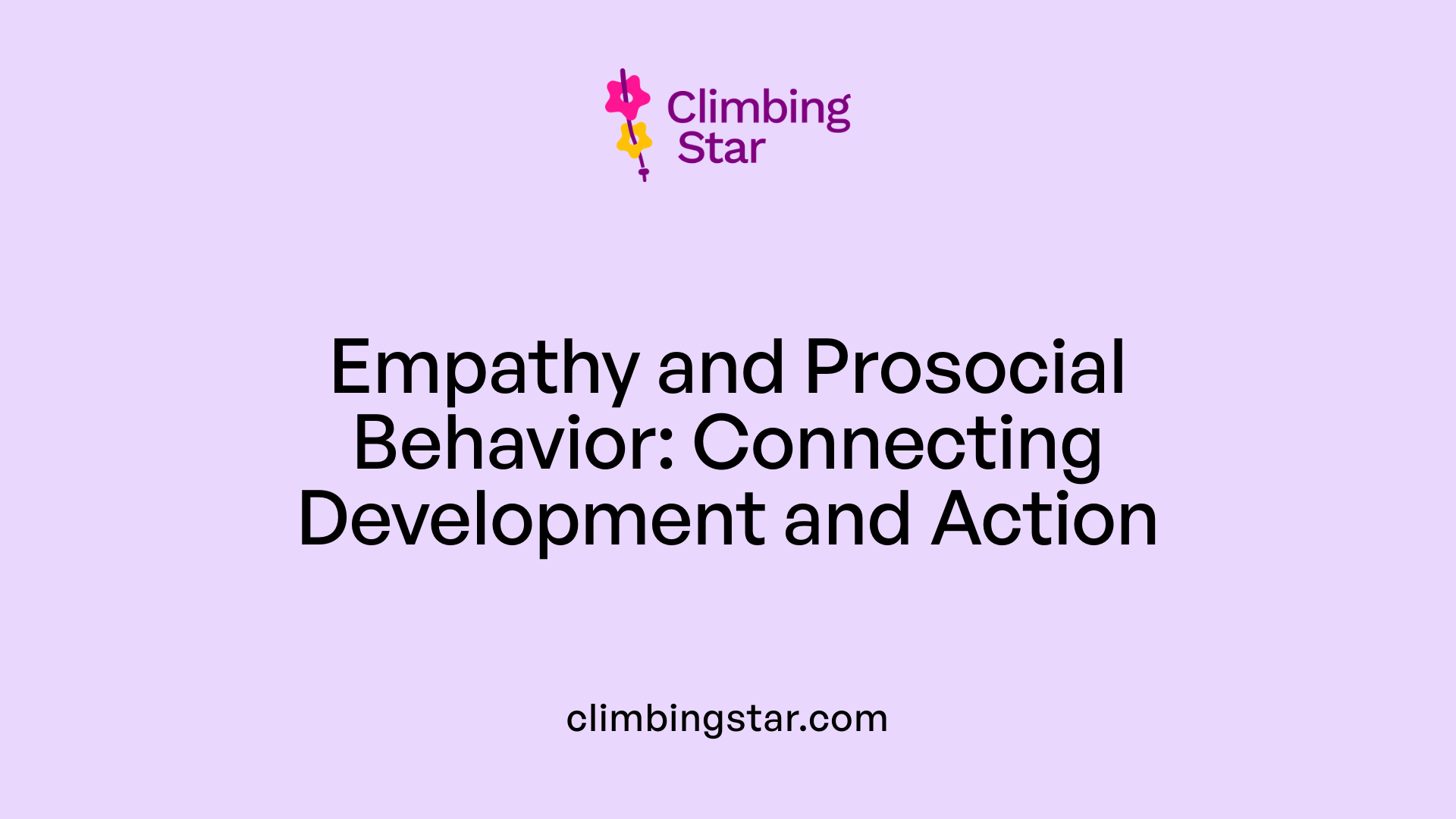
How Is Affective Empathy Connected to Parent-Reported Prosocial Behaviors?
Research has found a positive association between affective empathy—especially the ability to share and respond to others' emotions—and prosocial behaviors as reported by parents of autistic children. This suggests that enhancing a child's emotional responsiveness could foster more helpful and cooperative interactions in daily life.
Do Improvements in Theory of Mind Relate to Prosocial Actions in Experimental Settings?
Theory of Mind (ToM), which involves understanding others’ thoughts and feelings, is positively linked to prosocial behaviors observed in experimental contexts for autistic children. Those who show better ToM skills tend to be more helpful or equitable in tasks like resource allocation games, indicating that cognitive understanding plays a vital role in social behavior.
What Are the Implications for Interventions Targeting Empathy and ToM?
The correlation between enhanced affective empathy and ToM with increased prosocial behavior highlights the value of interventions focused on these areas. Techniques such as behavioral skills training and social stories can foster social understanding. Moreover, emotional development models promote relational exchanges that support affective empathy. Targeting both emotional resonance and cognitive mentalization processes may offer a comprehensive path to improve social skills and promote positive social interactions among autistic individuals.
Interventions Targeting Affective Empathy: Emotional Development Models

Therapeutic Approaches Focusing on Early Relational Exchanges and Emotional Growth
Interventions targeting affective empathy in autism spectrum disorder (ASD) emphasize early relational exchanges that support emotional development. These programs aim to foster social connectedness by encouraging implicit bodily resonance—the natural, nonverbal attunement between people that is often disrupted in ASD. Early interactions, such as shared attention, eye contact, and imitation, are foundational for building affective empathy through embodied emotional experiences.
Greenspan's Model Emphasizing Implicit Understanding Through Emotional Sharing
One influential therapeutic approach is Greenspan's model, which prioritizes emotional development via relational exchange. This model centers on facilitating emotional sharing to support implicit understanding and social reciprocity. By targeting developmental milestones, it helps individuals with ASD build affective empathy pathways that are not reliant solely on cognitive strategies. Greenspan's methods employ play-based techniques and caregiver involvement, nurturing emotional connections that underpin interpersonal resonance.
Supporting Embodied Social Connectedness in ASD
Supporting embodied social connectedness involves interventions that enhance the bodily and emotional signals integral to social communication—such as facial expressions, gaze patterns, and spontaneous mimicry. Therapeutic programs incorporating these elements can strengthen the intercorporeal experience, compensating for the core difficulties in nonverbal communication characteristic of ASD. This approach encourages the natural flow of affective empathy by engaging the body as a medium for social engagement, addressing the root challenges in social interaction experienced by autistic individuals.
Impact of Early Trauma on Empathy and Emotional Sensitivity in Autism
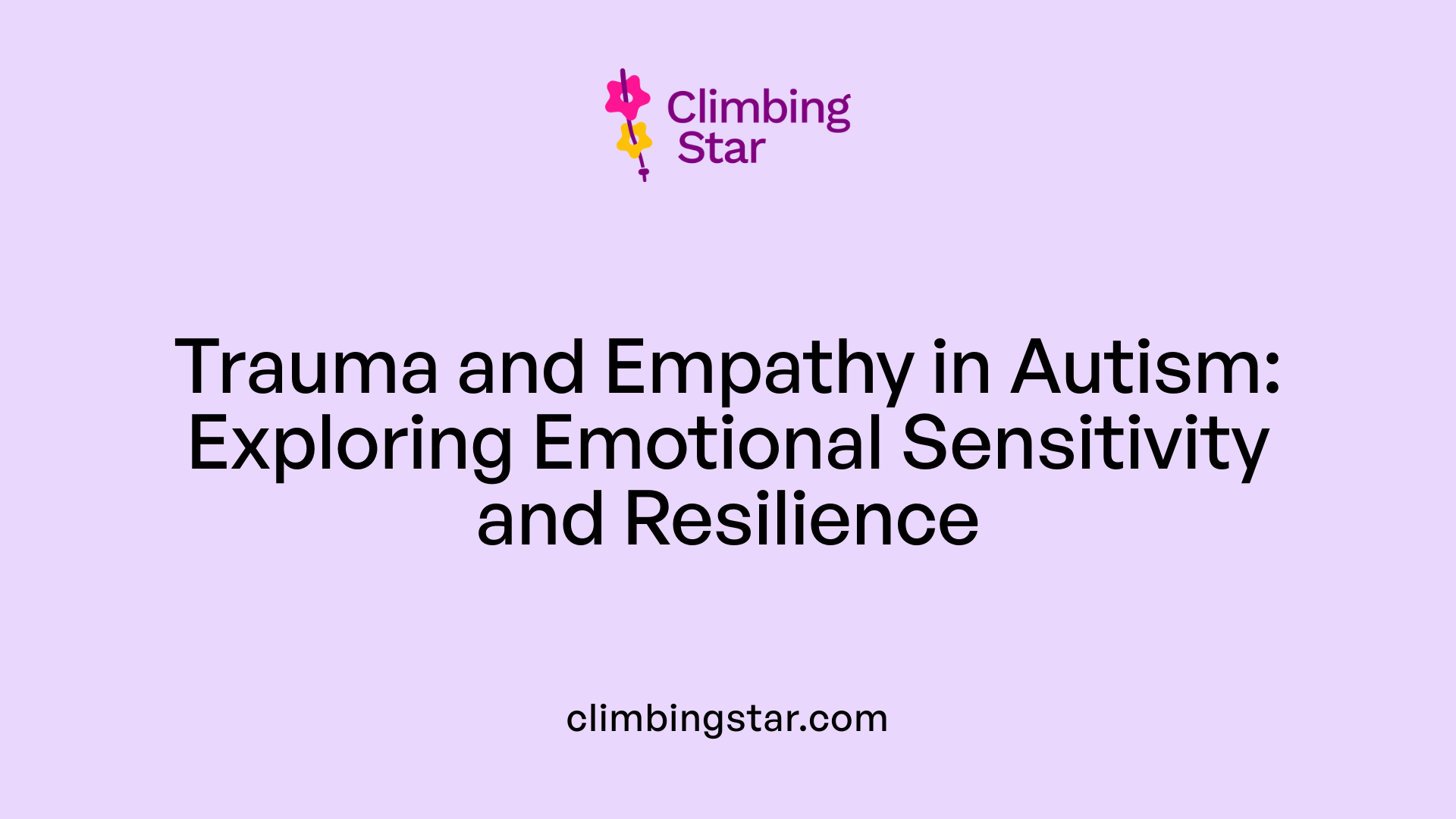
How Does Trauma Amplify Emotional Sensitivity in Autism?
Early trauma plays a significant role in intensifying hyper-empathy among individuals with autism spectrum disorder (ASD). This heightened empathy manifests as a stronger emotional responsiveness, often overwhelming those affected. Traumatic experiences can act as modifiers that exacerbate emotional sensitivity, making it more challenging for autistic individuals to regulate intense feelings and social interactions. The interplay between trauma and hyper-empathy means that emotional stimuli can trigger stronger reactions, complicating social functioning.
What Challenges Are Linked to Emotional Regulation and Trauma?
Emotional regulation difficulties in autism are often closely tied to past traumatic experiences. Elevated emotional intensity from hyper-empathy can lead to challenges like social overwhelm, trouble communicating feelings effectively, and increased stress. Trauma can deepen these struggles by influencing how emotions are processed and expressed. As a result, individuals may experience cycles of emotional dysregulation that impact relationships and everyday social engagement.
What Therapeutic Approaches Support Autism and Trauma-Related Emotional Challenges?
Addressing the complex relationship between trauma-induced hyper-empathy and emotional regulation involves specialized strategies. Trauma-informed therapy is essential, focusing on creating safe environments and recognizing trauma’s impact on emotional sensitivity. Additional supports include establishing clear boundaries to protect emotional well-being and utilizing techniques such as cognitive-behavioral therapy (CBT) and mindfulness to improve emotional control. Collaboration with family, caregivers, and professionals ensures comprehensive care that nurtures resilience and coping skills tailored for autistic individuals affected by trauma.
Collaborative Approaches: Multidisciplinary Support for Empathy and Social Skills

Who contributes to the multidisciplinary support for empathy and social skills in ASD?
Supporting individuals with autism spectrum disorder (ASD) in developing empathy and social skills requires collaboration among a range of professionals and caregivers. Therapists and occupational therapists often work closely together to address core sensory and social communication challenges. Behavior analysts, including Board Certified Behavior Analysts (BCBAs) and Registered Behavior Technicians (RBTs), provide evidence-based interventions such as Applied Behavior Analysis (ABA) to improve social functioning. Crucially, families play an integral role by validating emotions and nurturing emotional development in their children, fostering positive relationships at home.
How are various therapeutic approaches integrated?
ABA therapy, particularly when personalized as with Strides ABA, is commonly used to build emotional resilience and teach social skills. These programs often incorporate behavioral skills training (BST) methods, which use techniques like modeling, practice, and feedback for teaching social communication and understanding social cues. Cognitive-behavioral therapy (CBT) is integrated to help individuals regulate emotional intensity, especially in those experiencing hyper-empathy.
Mindfulness practices complement CBT by aiding emotional regulation and reducing social overwhelm. Combining these therapies with trauma-informed care addresses the complex interactions between hyper-empathy and early trauma in autistic individuals. Together, these approaches provide a comprehensive framework tailored to the unique empathic and social challenges faced by individuals with ASD.
How is the holistic management of empathy-related challenges approached?
A holistic approach recognizes that empathy in ASD involves both cognitive and affective components and their variability. Intervention focuses not only on skill training but also on interpreting body language, facial expressions, tone of voice, and contextual cues—the foundational elements of social competence. Utilizing visual supports such as social stories, videos, and scripts further aids comprehension.
Empathic challenges like intense emotional responses and social overwhelm are managed by setting clear boundaries and ensuring ongoing professional support. Collaboration extends beyond the clinical setting into the home and community, ensuring consistent reinforcement and generalization of skills in naturalistic environments. This multidimensional strategy supports autistic individuals in achieving improved social functioning and emotional well-being through concerted efforts across disciplines and caregivers.
Personalizing ABA: Emphasizing Emotional Resilience and Social Functioning
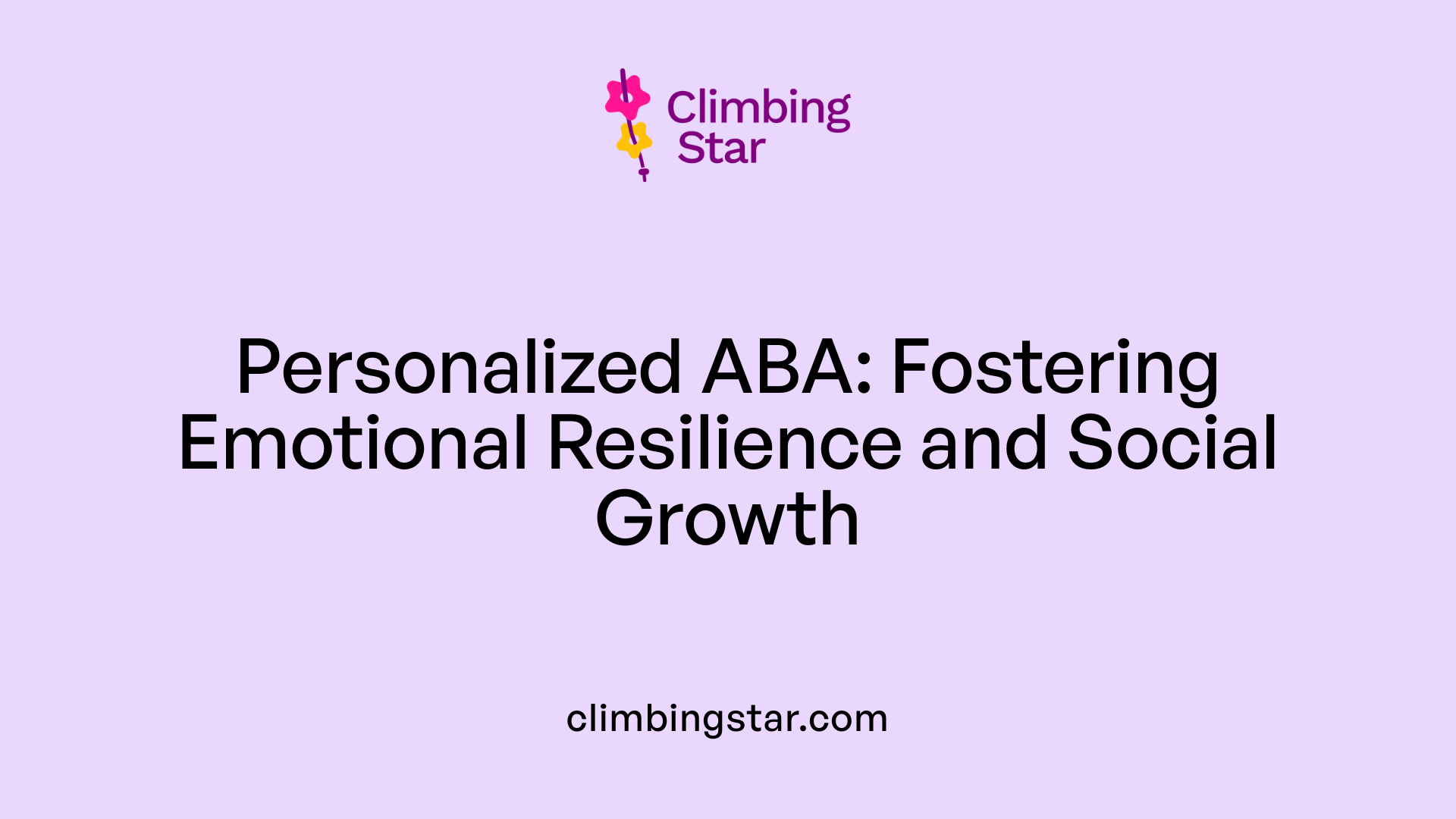
Tailoring ABA to Individual Profiles of Empathy and Social Needs
Applied Behavior Analysis (ABA) therapy, as offered by providers like Strides ABA, benefits from being highly personalized to the unique emotional and social profiles of autistic individuals. Considering the heterogeneity in empathy—particularly in cognitive and affective components—ABA programs can be customized to fit each individual's strengths and challenges. For example, some children may need more support enhancing cognitive empathy skills, such as interpreting social cues, while others may require interventions focused on managing intense emotional responses linked to hyper-empathy.
Incorporating Emotional Self-Regulation and Resilience-Building Strategies
Effective ABA programs integrate techniques for emotional self-regulation to support resilience. Strategies include trauma-informed approaches addressing emotional overwhelm and difficulties linked with hyper-empathy. Training often involves behavioral skills training (BST) elements like modeling, guided practice, and feedback focused on recognizing and regulating emotions. These approaches are supplemented with visual tools like social stories and video modeling to prepare individuals for social interactions in real-world contexts.
Promoting Positive Identity and Self-Acceptance Alongside Skill Development
A comprehensive approach encourages fostering a positive self-identity by validating emotions and encouraging emotional development. Parental involvement helps nurture this foundation by supporting relationship building and emotional expression. Collaborative therapeutic methods may involve mindfulness and cognitive-behavioral therapies to boost confidence and reduce social anxiety. This holistic focus ensures that alongside acquiring social communication skills, individuals build emotional resilience and self-acceptance, essential for long-term well-being and social functioning.
Future Directions in Autism and Empathy Research and Therapy
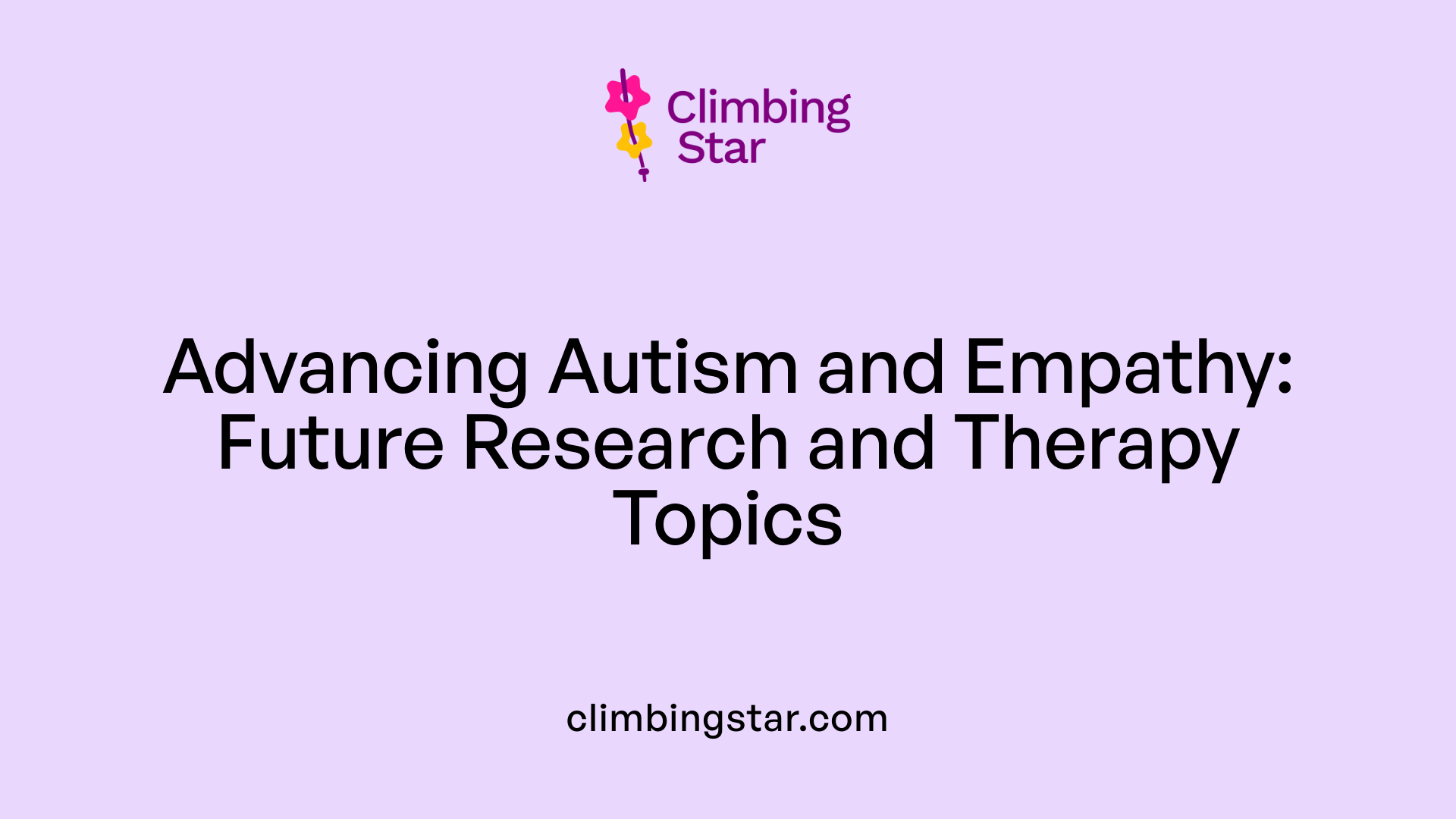
What areas require further exploration regarding empathy in autism?
Empathy in autism spectrum disorder (ASD) shows significant variability across individuals, highlighting the need to deepen our understanding of this heterogeneity. Research indicates a wide range of empathic abilities, with autistic individuals showing diverse profiles in cognitive and affective empathy. Further studies should investigate factors contributing to this variability, including age effects on empathy differences, as older autistic adults may experience greater challenges in cognitive and negative affective empathy.
How can assessment tools and intervention models be improved for autism?
Refinement of empathy assessment tools is essential. The Perth Empathy Scale (PES) has demonstrated promising results by providing unbiased measurement of cognitive and affective empathy components across autistic and non-autistic groups. Future development should focus on creating sensitive, multidimensional instruments that capture the nuanced empathetic profiles within ASD.
Parallel to assessment, intervention approaches must evolve. Current social skills training benefits from integrating behavioral skills training (BST), visual strategies, and naturalistic peer interactions. New therapeutic models that emphasize emotional development and relational exchanges—attending to affective empathy rooted in bodily resonance—could better address core difficulties in social interaction. Incorporation of trauma-informed techniques is also crucial, especially for individuals experiencing hyper-empathy and emotional overwhelm.
Why is bridging scientific findings with neurodiversity-affirming practices important?
While empirical research emphasizes certain deficits in cognitive empathy and ToM, a neurodiversity-affirming perspective recognizes strengths and unique variations in empathy among autistic individuals. Bridging scientific insights with practices that respect and celebrate neurological differences fosters compassionate, personalized care. This may include validating emotional experiences, encouraging modality-specific social learning strategies, and promoting collaboration among caregivers, therapists, and individuals.
An integrative approach that combines precise measurement, tailored interventions, and a respect for neurodiversity promises improvements in social functioning and emotional resilience for autistic individuals. Future research should focus on these intersections to develop therapies that are both scientifically sound and empowering.
| Topic | Importance | Direction |
|---|---|---|
| Empathy heterogeneity | Understanding individual differences guides personalized care | Explore demographic and neurological moderators |
| Assessment refinement | Sensitive tools capture complex empathy profiles | Enhance multidimensional scales like PES |
| Intervention evolution | Addressing affective empathy and trauma improves outcomes | Develop embodied and relational therapies |
| Neurodiversity integration | Supports respectful and effective practices | Combine scientific rigor with inclusivity and empowerment |
Embracing Complexity: Toward Enhanced Understanding and Support
Empathy in autism spectrum disorder is a multifaceted and nuanced phenomenon that challenges simplistic interpretations. While cognitive empathy and Theory of Mind may present difficulties for many autistic individuals, affective empathy can be present and deeply felt, albeit often with unique characteristics such as hyper-empathy. Applied behavior analysis therapy, alongside other supportive interventions, plays an essential role in fostering social skills, emotional resilience, and prosocial behaviors by addressing individualized needs. Embracing the natural diversity within autism, acknowledging the interplay of trauma and emotional sensitivity, and promoting collaborative, respectful therapeutic approaches hold promise for enhancing quality of life and social inclusion. Continued research and empathetic understanding will pave the way for more nuanced, effective, and human-centered support for autistic individuals and their communities.
References
- Empathy, Theory of Mind, and Prosocial Behaviors in ...
- Empathy and Autism: Establishing the Structure ...
- Autism Social Skills Training Strategies
- The Role of Hyper-Empathy in Autism Spectrum Disorder
- Autism as a Disorder of Affective Empathy | Psychopathology
- How to Become an Applied Behavior Analyst (ABA) Therapist
- How to Become an ABA Therapist - School of Education







